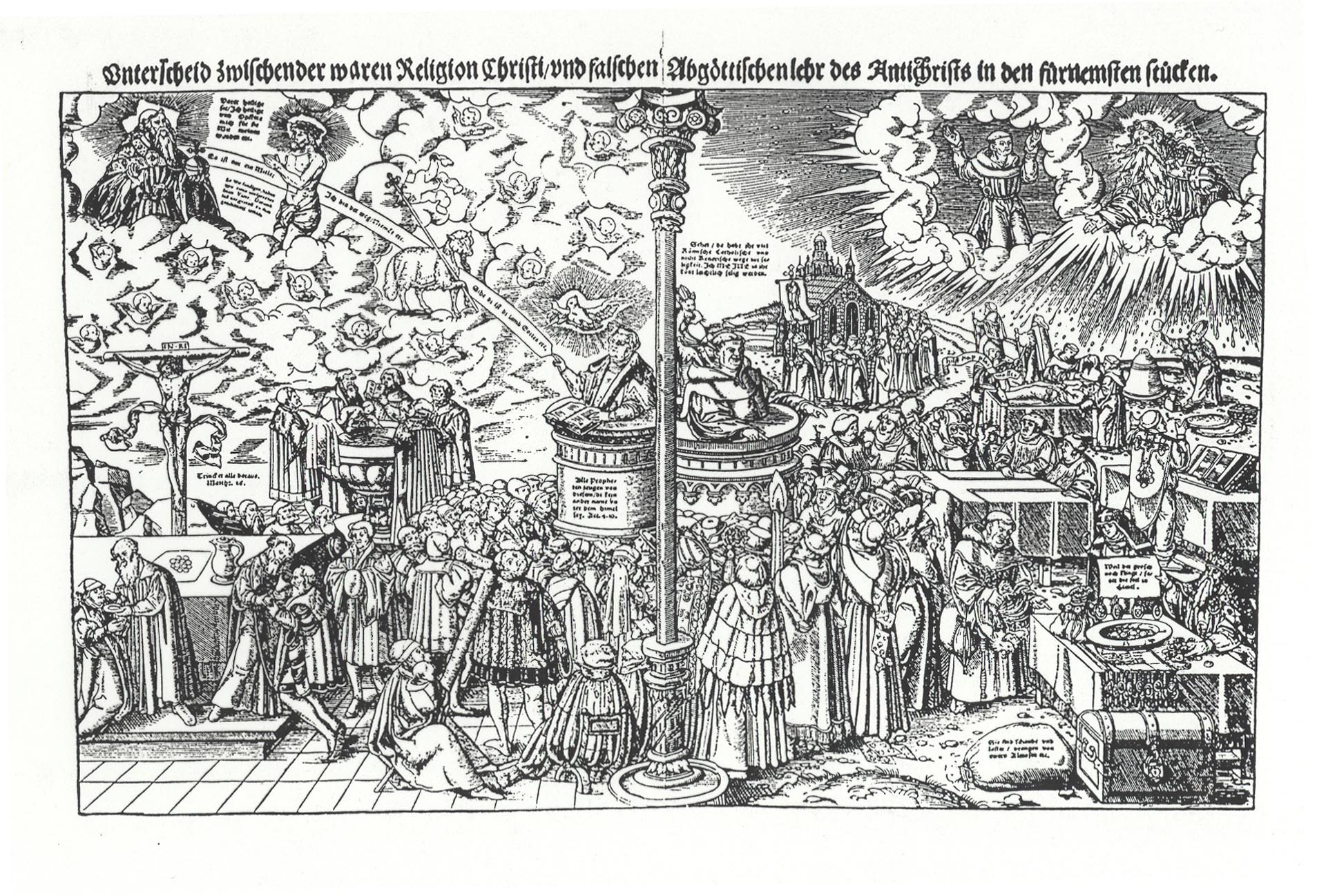| In this woodcut, Lucas Cranach seeks to illustrate the
fundamental
differences between the church of Rome and the evangelical teaching of
Luther and his followers. Like many other such broadsheets, the
argument
is conveyed through visual parallelism and contrast. The panel on the
depicts
the world of reformed preaching, the right-hand panel its Catholic
counterpart.
A scroll of text unfolds from God the Father through the other personae
of
the Trinity straight to Luther; it reads "There is only one mediator. I
am the way. Behold, this is the Lamb of God." Jesus, in prayer, says to
God: "Father, I sanctify you, I sanctify and sacrifice myself for you."
On Luther's pulpit are inscribed the words "All the prophets witness to
this one--that there is no other name under heaven [by which we
can
be saved], Acts 4:10." In the foreground is Luther's protector, John of
Saxony, holding a cross on his shoulder. The space appears to be
interior,
and is lacks decoration. Luther's audience consists of ordinary lay
people.
To the left, a man and woman receive communion in both kinds, bread and
wine. |
Luther's counterpart in the right-hand panel is an
unidentified priest
preaching to a gathering of churchmen--bishops, cardinals, monks,
doctors
of theology. The candle bearing cleric has a hood with two ears and
bells
at each tip, like a fool's cap; another has hidden playing cards in his
hood, which spill out as he raises his head to hear the sermon. A demon
is blowing air into the preacher's ear, prompting him to say "Behold,
before
you lie many Roman Catholic, not heretical, paths to salvation; you can
come easily to glory." A pilgrimage is visible in the background; a
mass
is celebrated to the right, but no one is hearing it. In the right
foreground,
the pope sells indulgences, holding a sign that reads "When a coins
drops,
a soul flies to heaven." From heaven, God and Saint Francis observe the
scene in dismay (commentary adapted from Steven Ozment, The Age of
Reform,
1250-1550: An Intellectual and Religious History of Late Medieval and
Reformation
Europe [New Haven: Yale University Press, 1980], 214-215). |





